| |
|
|
| |
Seven great nymphs for the Tongariro.
Thu 28th June, 2012
|
|
|
|
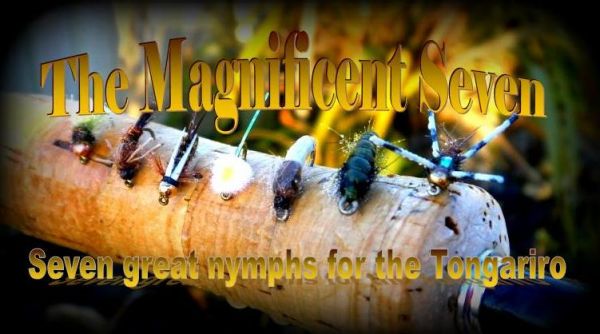
Don't worry your on the right page ... its not an old movie review I'm just trying to get your attention. To finish off the nymphing series I thought it might be a good idea to offer beginners and visiting anglers some suggestions on what to use if they intend to pinch our fish from the Tongariro. All of the nymphs can be bought locally in any of the tackle shops, so there are no "secret flies " amongst this lot. I'm also going to assume that everyone already has the two old favorites ... the Pheasant Tail and Hare & Copper in their fly box. Together with the patterns listed below you should manage a few takes whatever time of year you turn up. It doesn't matter if they're used with a traditional Tongariro nymphing rig tied to a dropper off the bomb. Or as one of the flies that go to make up some of the other nymphing methods we've looked at over the past weeks, with this selection most nymphing situations on the river will be covered.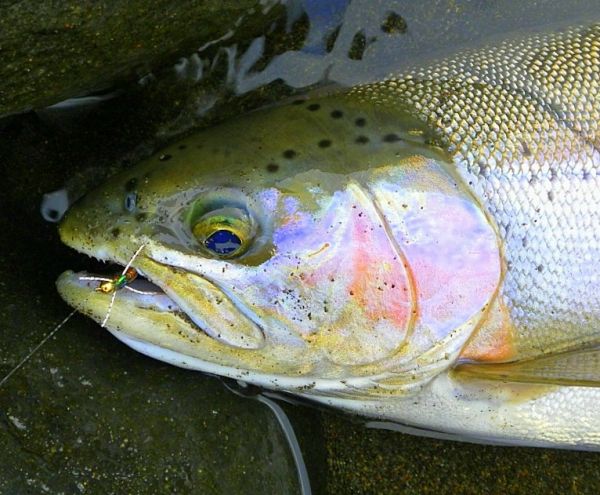
A real mouthful to start off with ... the Gold Head Flash-back Rubber Leg Pheasant Tail, yet another variant of Sawyer's famous original. I've always been a big fan of rubber-leg flies and many patterns old and new now have rubber-leg versions. Personally I find some
{ but not all } of the commercial offerings cut the legs a bit short which robs the fly of the movement that the addition of rubber-legs gives the nymph. I tend to use it as the middle fly off the bomb as a sort of attractor pattern in size 14 or as the point fly in size 16. Fresh run fish can be suckers for rubber and this time last year I had great fun using this same nymph.
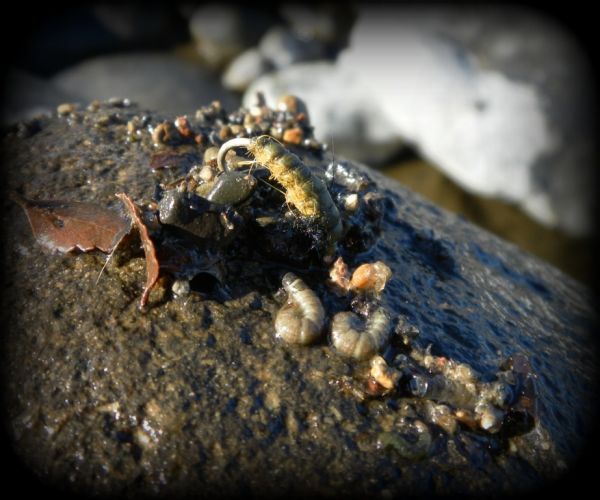 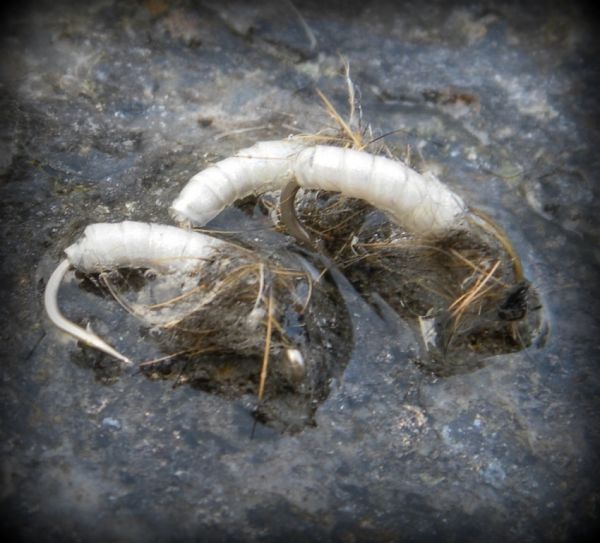
Caddis are probably top of the list for feeding trout once they enter the river. The Tongariro supports a huge caddis population and I'm not the only one to have retrieved their artificials at the end of a drift and found live caddis larvae impaled on the hook point. Colors vary but the most popular are olive/green or dirty white in size 12 - 16. At present there are some large green caddis in the river, probably equating to a size 12 hook just like the one pictured above. I like to tweak shop bought white caddis with water-proof marker pens. Most insects have a lighter under-side, you can easily replicate this by coloring the back of the fly and smudging it with your finger. By experimenting with different colors you'll eventually end up with quite a realistic looking nymph ... but don't overdo it.
The larval stage is usually divided into three types, cased, net building and free swimming. There are dozens of patterns to choose from but the ones tied with a defined body segmentation look more like the natural insect. If your not sure which color to go for turn over a few rocks before you cast out, there should be plenty on the underside.
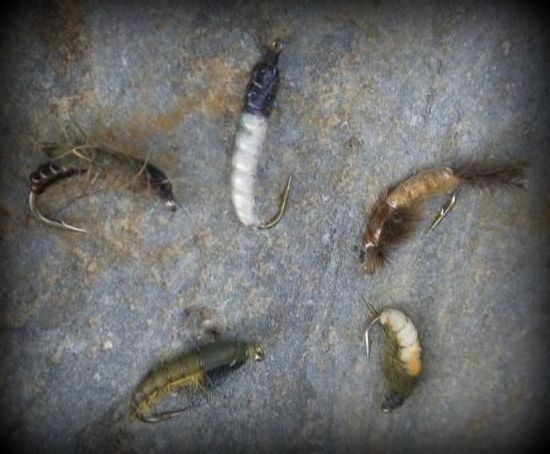
Case builders surround themselves in a sort of tube and spend most of their time inside it. The case itself is made up of tiny bits of twigs, sand or gravel which they attach using a silk like substance which comes from a gland near their mouths. They crawl along the river bed in their portable homes…a bit like hermit crabs with their legs and head protruding from one end. Free swimming caddis only build shelters when they are ready to pupate. Net builders construct a retreat or net using the sticky silk like secretion and this also helps trap food items washed downstream. Although you'll find small numbers of cased caddis in the stomach contents of trout it will be the last two that show up most often in gutted fish on the Tongariro.
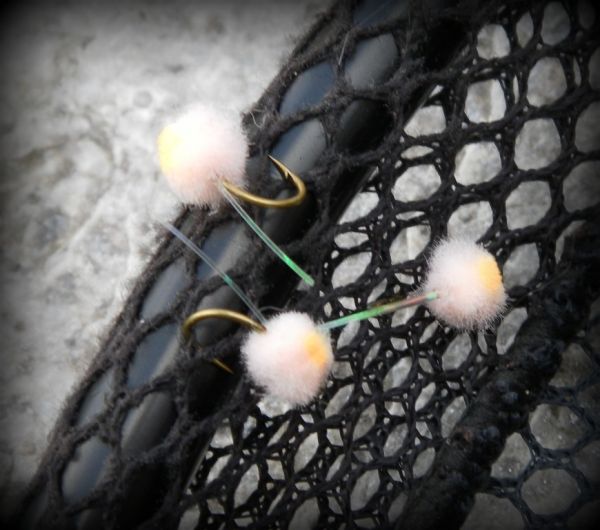 Here's a great little globug if you fancy a change from the Fire Orange egg fly usually recommended. I've been using these flash tail mini-eggs in sizes 16 - 14 for a couple of years with some good results. I tend to treat then more like a nymph than an egg because they'll even work in clear conditions as the point fly under the big dry. Although you get globug patterns that catch fish with multiple eggs on one hook, trout don't spawn in clusters. Occasionally if they drift downstream you'll get a few eggs that have stuck together but most of the eggs fish encounter will be singles. These smaller globugs look more like a real fish egg and the light reflecting off the tail is an added trigger which really gets a trouts attention. Here's a great little globug if you fancy a change from the Fire Orange egg fly usually recommended. I've been using these flash tail mini-eggs in sizes 16 - 14 for a couple of years with some good results. I tend to treat then more like a nymph than an egg because they'll even work in clear conditions as the point fly under the big dry. Although you get globug patterns that catch fish with multiple eggs on one hook, trout don't spawn in clusters. Occasionally if they drift downstream you'll get a few eggs that have stuck together but most of the eggs fish encounter will be singles. These smaller globugs look more like a real fish egg and the light reflecting off the tail is an added trigger which really gets a trouts attention. 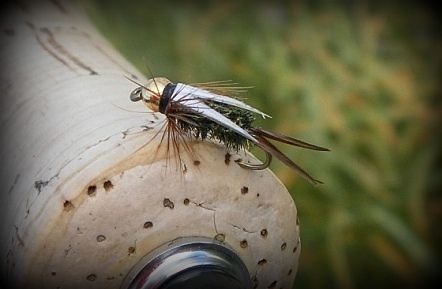
It has undergone a few changes since it first appeared in the 1930's but another consistent fish catcher that's been around for years is the Prince Nymph. A little bit of digging revealed that when it was first dreamed up by brothers Dick and Don Olson it was originally called the Forked Tail nymph. Doug Prince from Monterey, CA began using and tying the fly in the 1940's and it became a hit on his favorite possie the KIngs River. Legendary fly tier and tackle shop owner Buz Buszek decided to include the pattern in his 1940 mail order catalogue but had forgotten the name of the fly that Doug Prince had tied for him so he called it the Prince nymph and the name stuck. The most obvious difference between the original fly and the modern version is the addition of a bead. In the 1930's there was no such thing as a bead head fly, in fact they're a fairly recent innovation in fly tying, first appearing on flies tied by Austrian angler Roman Moser in the 1980's. The Prince doesn't imitate a specific insect but has a number of attributes which together make it attractive to fish, like the contrasting white biots used for the split wing, the natural shimmer of a peacock herl body and a bead head to help get the nymph down fast to feeding trout. Tied without the bead in smaller sizes its useful just under the surface as an emerging mayfly and some anglers use it on bigger hooks as a streamer type pattern with a sinking line. Like all successful flies there are now hundreds of variations on the original idea and I expect it will still be catching fish when we're all long gone.
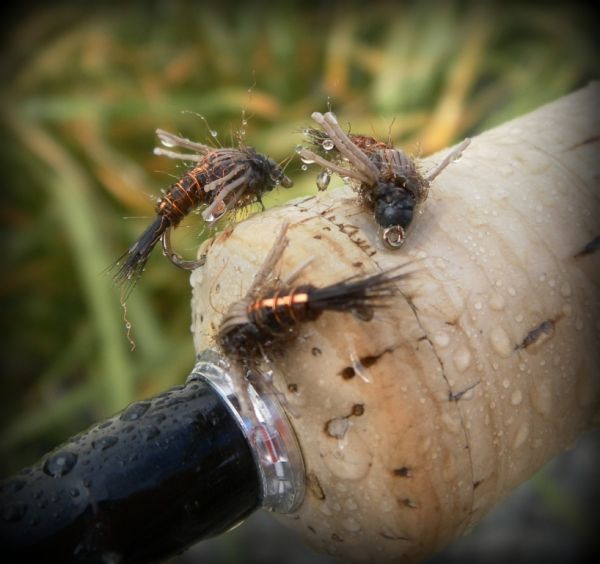
Most of us know David Lambroughton as an internationally famous angling photographer but he's also an Umpqua Signature Fly Tier and one of his most popular creations is the P.T Cadillac Nymph. This cracking little fly has accounted for fish all over the world and is a New Zealand favorite. His original pattern uses pheasant tail fibers for the body ... hence part of the name ... but others often replace the feather fibers with dubbing which not only shortens the name but makes the fly more durable. This is another versatile fly which suggests various mayfly or stonefly nymphs. The Cadillac is equally at home on a dropper off the bomb or my favorite, dead drifted suspended under the big dry.
A useful multi-purpose fly that I wouldn't want to be without.
The " Z Wing Caddis " is another well known pattern by American angler Mike Mercer who is also an Umpqua Fly Tier. A really simple caddis pupae for us amateurs to copy.
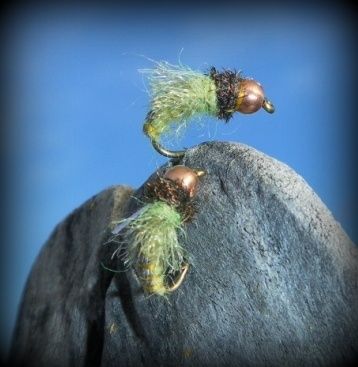 It can be tied with or without a bead and will catch fish right through the water column. In sizes 16 and 18 its a beaut as the point fly on the long dry and dropper and I often team it with the Bead Head Olive Emerger that I always use with this rig. It can be tied with or without a bead and will catch fish right through the water column. In sizes 16 and 18 its a beaut as the point fly on the long dry and dropper and I often team it with the Bead Head Olive Emerger that I always use with this rig.
I remember fishing Cattle Rustlers during a late afternoon hatch last year. There were half a dozen rainbows spread across the tail of the pool feeding in the clear water but I had a frustrating 30 mins until I drifted the setup mentioned above over them. That's when they finally showed some interest and I managed to tempt a few of them before they had enough of me and disappeared into deeper water.
So there we have it seven flies easily sourced from any of the tackle shops in Turangi that should get you catching when nymphing the Tongariro ... now all we need ... are the fish.
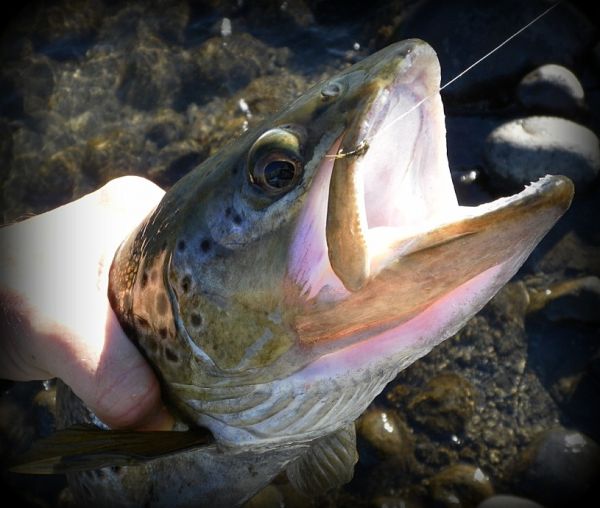
Talking of fish, this weeks famous fishy quote : " It has always been my private conviction that any man who pits his intelligence against a fish and loses ... has it coming. " ~ John Steinbeck
Tight Lines Guys
Mike |
|
|
| Back to Top |
|
|
|
|
|
|
|